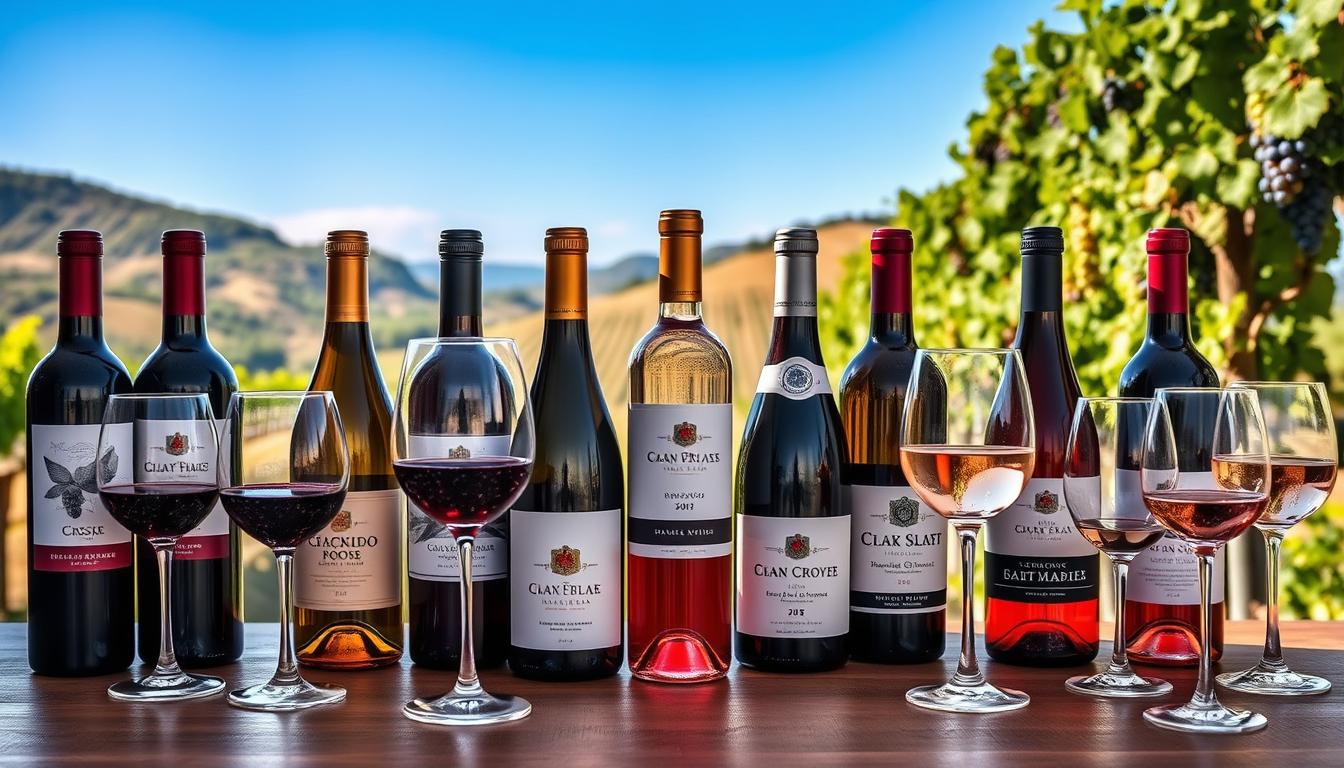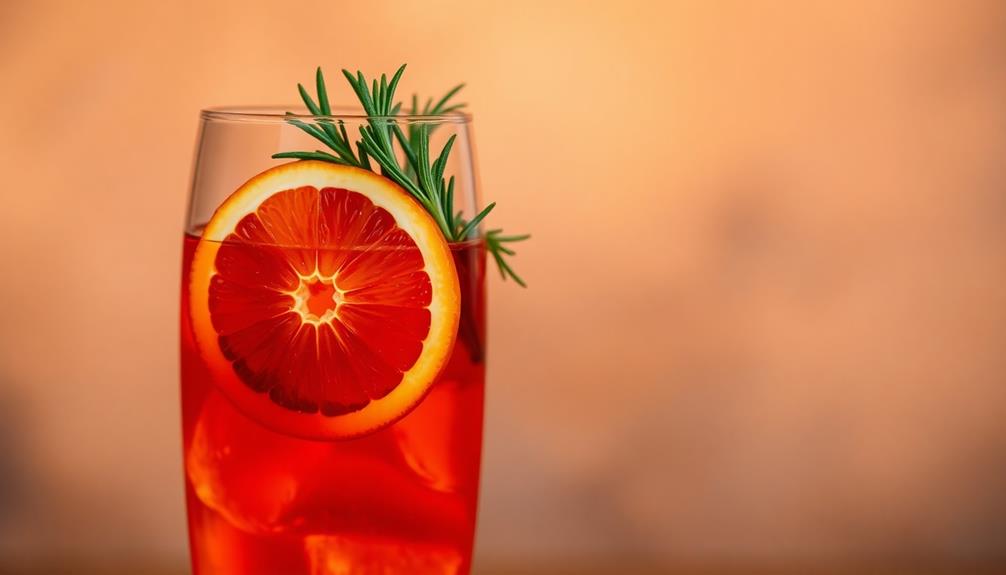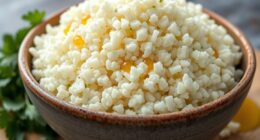Have you ever found yourself holding a glass of wine, savoring the rich, complex flavors while reflecting on the moments that led you to that very sip? Wine has the powerful ability to transport us back to gatherings with friends, celebrations of love, and intimate dinners filled with laughter. In this journey through the world of best wines, you will explore an array of experiences waiting to be discovered. From the boldness of a Cabernet Sauvignon to the crispness of a well-chilled Chardonnay, every bottle tells a story. This ultimate guide is here to help you learn about premium wine choices, navigating regions, varietals, and occasions, ensuring every sip is as memorable as the moments that inspire them. Join us as we unveil the secrets behind selecting wines that elevate your dining experiences and create lasting memories.
Key Takeaways
- Familiarize yourself with different wine types: red, white, rosé, sparkling, dessert, and fortified wines.
- Understanding terroir can enhance your appreciation for wine characteristics influenced by climate and soil.
- Proper storage and serving guidelines are essential for the best wine experience.
- Food and wine pairing can transform dining moments into extraordinary experiences.
- Engaging with sommeliers can provide you with expert guidance for navigating wine selections.
- Exploring a variety of wines helps expand your palate and knowledge.
- Investing in high-quality wines can elevate social events and leave lasting impressions on guests.
Understanding the World of Wines
The world of wine is a rich tapestry woven from the unique characteristics of various global wine regions. Each region contributes to the flavor and quality of wines produced, creating diversity that wine lovers can appreciate. By exploring how specific areas influence the best wines, you can enhance your enjoyment and understanding of this fascinating beverage.
Overview of Global Wine Regions
Wine is produced across numerous regions, with Old World and New World classifications providing insight into different styles and methodologies. Key Old World areas such as France, Italy, and Spain lead the pack with established traditions and iconic varietals.
- France: Renowned for Bordeaux and Burgundy.
- Italy: Famous for Tuscany’s bold Chiantis.
- Spain: Known for Rioja and Priorat’s complex reds.
In contrast, New World regions, including Napa Valley in the USA and Barossa Valley in Australia, embrace innovation and flexibility. These regions experiment with varietals like Malbec from Argentina and Sauvignon Blanc from New Zealand’s Marlborough region, which produces about 77% of all New Zealand wines.
The Role of Terroir
Terroir plays a significant role in shaping wine characteristics, encompassing the soil, climate, and ecological conditions of each vineyard. Old World winemakers prioritize traditional practices and sustainable farming. They carefully select grape varieties that best match the local terroir, such as Pinot Noir and Chardonnay in Burgundy.
New World winemaking, on the other hand, utilizes technology for vineyard management and production efficiency. This includes mechanical harvesting and precision agriculture, enabling winemakers to adapt to varying climatic conditions and achieve higher yields.
Consider exploring the differences further with this table showcasing key aspects:
| Aspect | Old World | New World |
|---|---|---|
| Vineyard Management | Hand labor, traditional practices | Technology-driven, efficiency-focused |
| Varietal Selection | Traditional varietals suited to terroir | Experimentation and diverse varietals |
| Winemaking Techniques | Manual intervention, neutral oak barrels | Stainless steel tanks, small oak barrels |

What Makes a Wine the Best?
Identifying the best wines requires considering various factors that contribute to their overall quality. High-quality vintages stand out due to specific characteristics that appeal to wine enthusiasts. Understanding these elements can greatly enhance your wine journey.
Key Characteristics of High-Quality Vintages
To recognize high-quality vintages, pay attention to the following traits:
- Balance: Successful wines harmoniously blend acidity, tannins, sugar, alcohol, and fruit components.
- Complexity: Wines with multiple layers of flavor are often deemed superior, revealing new tastes over time.
- Typicity: This refers to a wine’s ability to reflect expected characteristics of its grape variety and region.
- Finish: A lingering finish indicates higher quality, with flavors that persist after swallowing.
- Terroir Influence: The climate, soil types, and flora where grapes are grown significantly affect the final wine.
Importance of Aging and Cellaring
Aging wine plays a crucial role in enhancing its attributes. Here’s why it matters:
- Flavor Development: Aging allows flavors to mature, creating more depth and complexity.
- Improved Structure: Tannins often soften over time, leading to a smoother drinking experience.
- Optimal Conditions: The right temperature and humidity levels in your cellar promote ideal aging.
- Grape Variety Suitability: Different varietals age differently, influencing how they evolve over the years.
- Harvest Timing: Picking grapes at the right moment ensures the best starting point for aging.
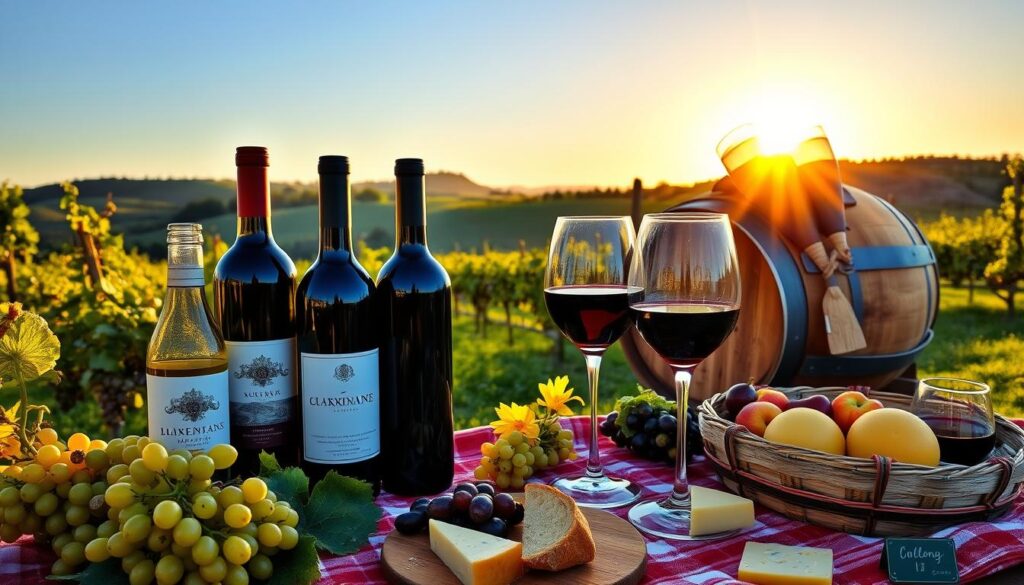
In summary, recognizing the best wines involves an appreciation for high-quality vintages marked by balance, complexity, and a lasting impression. Aging and proper cellaring techniques can elevate these wines, enriching their flavor profiles and making your wine experience even more enjoyable.
Exploring the Best Wines: Types and Varietals
Embarking on a journey through the world of wine opens the door to countless delightful options. You find yourself surrounded by various types and varietals, each offering unique flavors and aromas. This section presents an opportunity to explore top-rated wine selections and discover the finest varietals that will enhance your wine experience.
Top-Rated Wine Selections
When searching for the best wines, the richness of choices can feel overwhelming. Here are some top-rated selections that represent a wide array of styles:
- Cabernet Sauvignon – Celebrated as the most popular wine globally, known for its bold flavors and aging potential.
- Syrah – Heavily planted in the Rhône Valley and Australia, offering rich and spicy profiles.
- Zinfandel – Originating from Croatia, this varietal is recognized for its fruit-forward and spicy characteristics.
- Chardonnay – First widely planted in France, celebrated for its versatility, ranging from crisp to buttery profiles.
- Riesling – A high-acid wine that can be sweet or dry, showcasing its versatility across various styles.
- Malbec – Known for its deep color and robust flavors, with Argentina’s Mendoza region being a primary producer.
Finest Varietals to Consider
You can explore an array of the finest varietals, each with distinct characteristics. Here’s a closer look at some worthy contenders:
| Varietal | Origin | Characteristics |
|---|---|---|
| Pinot Noir | France | Higher acidity, low tannins, and berry flavors. |
| Sauvignon Blanc | France | Refreshing acidity, vibrant flavors, and a dry profile. |
| Pinot Grigio | Italy | Light and crisp, perfect for easy sipping. |
| Tempranillo | Spain | Aromatic with dark fruit flavors, excellent for pairing with food. |
| Gewürztraminer | France/Germany | Highly aromatic and floral, with sweet and spicy notes. |
| Sangiovese | Italy | Moderate acidity that pairs excellently with Italian dishes. |
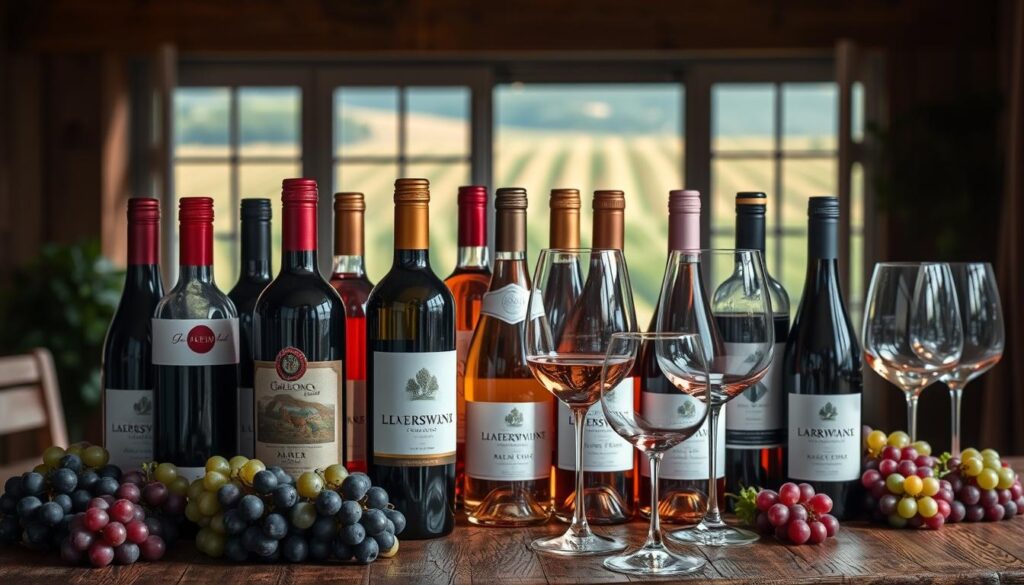
No matter your wine preferences, exploring these top-rated selections and finest varietals will lead you to some of the best wines available. Each pour invites you to experience distinct flavors and aromas, promising a journey that is both delectable and memorable.
Wine Label Decoding Tips
Navigating the intricate world of wine labels can feel overwhelming, but understanding the information presented can help you identify some of the best wines available. Each component of a wine label carries meaning, and familiarity with common terminology enhances your wine-buying experience. This section will address the basics of wine labels and clarify the terminology you’re likely to encounter.
Understanding Labels: The Basics
Wine labels often present essential details about the contents inside the bottle. In the New World, you might find that producers emphasize their brand more than traditional regions, allowing you to explore based on reputation and style rather than strictly geographic factors. If a varietal name appears on a U.S. wine label, it must constitute at least 75% of the contents. Regulations vary in other regions, like Chile, where 75% is also the standard for varietal labeling, although many producers aim for 85% to comply with European guidelines.

Common Terminology Explained
Becoming familiar with common terminology will enhance your understanding as you examine wine labels. Here are some terms to look out for:
| Term | Meaning |
|---|---|
| Estate Bottled | Wines made from grapes grown and produced on the estate. |
| Old Vines | Vines ranging from 15 to 115 years old, potentially producing richer flavors. |
| Reserve | A subjective term with no official rules; used to signify quality or selection. |
| Alcohol by Volume (ABV) | Percentage indicating the wine’s alcohol content, required on all U.S. labels. |
| Vintage | The year grapes were harvested, indicating ripeness and potential flavor. |
| Contains Sulfites | A mandatory label phrase for wines, indicating the presence of sulfites. |
Understanding these terms allows each wine label to offer insight into the wine’s quality, origin, and production practices, providing you with the knowledge to make informed choices. Investing time in decoding wine labels opens the door to discovering exceptional wines tailored to your palate.
Shopping for Wine: Strategies for Success
Navigating the world of wine can feel overwhelming at times, especially considering the vast selection available. Understanding how to shop for wine effectively allows you to make informed decisions without experiencing buyer’s remorse. With a few strategies in mind, your journey to discovering the best wines can become enjoyable and fulfilling.
How to Navigate a Wine Shop
When shopping in a physical wine store, planning is critical. Here are some tips to enhance your shopping experience:
- Know Your Preferences: Understanding your own taste in wine helps guide your selections. For instance, if you know you prefer sweeter options, this can narrow down your choices significantly.
- Set Parameters: Consider factors such as budget, type of grape, or region before entering the shop. This ensures focused shopping, avoiding aimless wandering.
- Choose Off-Peak Hours: Visiting during quieter times, like early mornings or right before closing, reduces the stress of crowded spaces and impulse buys.
- Research and Compare: Having researched the wines beforehand improves confidence in your purchases. Comparing qualities and prices helps avoid misunderstandings.
Online Wine Shopping: The Best Platforms
The rise of online wine shopping offers incredible opportunities to explore an extensive range of best wines from the comfort of your home. Key benefits include:
- Convenience: Browse various selections at any time, which is especially useful during busy holidays.
- Broader Selection: Many platforms provide access to rare or hard-to-find wines that local shops may not carry.
- Customer Reviews: Online reviews from fellow wine lovers can guide your choices and add valuable insights into the quality of the wines.
More than half of wine drinkers prefer semi-sweet or sweet white and rose wines when starting their wine journey. Utilizing this knowledge can improve your online wine shopping experience, guiding you to selections that suit your palate, whether you lean towards sweet or are aspiring to explore drier options.
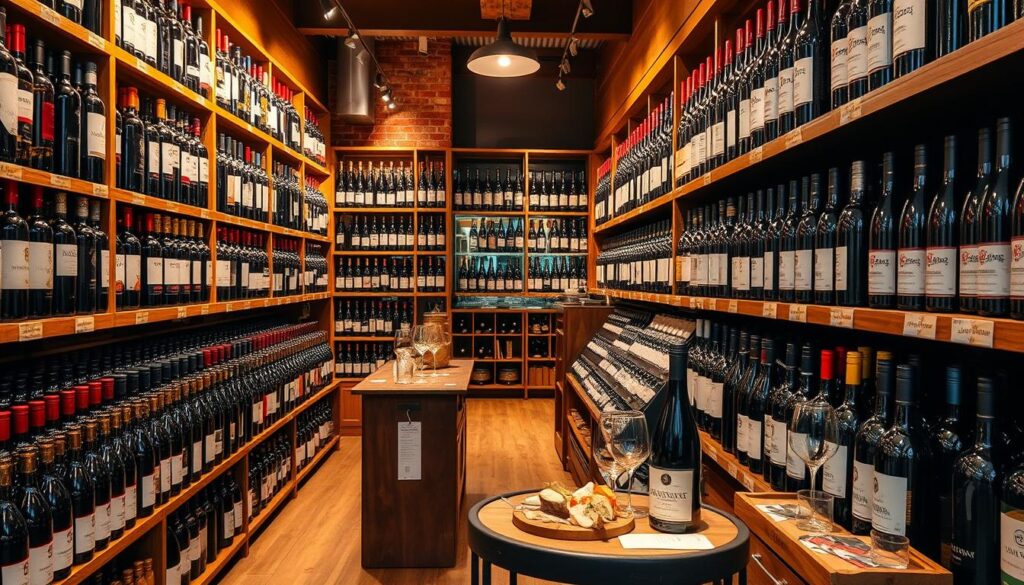
| Preferred Wine Style | Demographic Preference |
|---|---|
| Semi-sweet or Sweet White Wines | 54% of new wine drinkers |
| Old World Wines | Black coffee drinkers |
| New World Wines | Latte drinkers |
Understanding these trends enhances your ability to select wines that you will likely enjoy while exploring the best wines available in both physical and online settings.
Best Wines for Every Occasion
Selecting the best wines often depends on the event you’re hosting. Certain wines elevate the mood of celebrations, while others create perfect pairings with dinner parties. This guide will help you choose the right wines for celebrations and navigate impressive dinner party pairings, ensuring you impress your guests with every pour.
Choosing Wines for Celebrations
Wines for celebrations should evoke a sense of festivity and joy. As a starting point, consider serving sparkling wine at birthday parties to add a bubbly touch to the festivities. Similarly, Chardonnay can work wonderfully for social gatherings among friends, creating a light atmosphere. For Valentine’s Day celebrations, a lovely Rosé is ideal, giving a romantic flair to your event.
When selecting special-occasion wines, focus on options that are uncommonly delicious, complex, and balanced. Noteworthy selections highlighted at the 2022 Food & Wine Classic included the 2012 Champagne Collet “Esprit Couture” Brut and the 2019 Martaella Estate Pinot Noir from Benovia. Large-format bottles can also enhance the experience; consider an impressive 18-liter melchior of Martaella Estate Pinot Noir for your next celebration.
Perfect Pairings for Dinner Parties
When planning dinner party pairings, the aim is to find wines that complement your dishes flawlessly. Merlot may suit parents’ anniversaries or intimate dinners, offering a rich, smooth profile that can enhance various flavors. For adventurous guests, consider selections like the 2017 M. Chapoutier Hermitage Chante-Alouette Blanc paired with seafood starters or the 2019 Commanderie de Peyrassol “Le Clos Peyrassol” Red with grilled meats.
Don’t underestimate the versatility of Red Rioja white wines, which are often fairly priced and can work well with a range of cuisines. The Domaine Carneros lineup, particularly its offerings under $35, promises reliability and deliciousness, making them excellent choices for your meals. Wines crafted from specific grapes, like Donnafugata BenRyé with its honeyed nuance from Zibibbo di Pantelleria, can leave lasting impressions on your guests.

Building Your Own Wine Collection
Embarking on the journey of building your wine collection can be an exciting adventure. You have the opportunity to explore your unique tastes while strategically investing in exceptional bottles. This process requires careful planning, a keen understanding of your preferences, and the ability to foresee which wines will appreciate over time.
Starting a Curated Wine List
To create your curated wine list, focus on establishing a balanced cellar. Consider including a variety of wines such as whites and reds, young and mature selections, along with both everyday and prestige bottlings. A typical investment strategy might involve dedicating about $10,000 for a 16-case collection, which translates to 192 bottles. An example allocation could look like this:
| Wine Type | Number of Cases | Approximate Cost |
|---|---|---|
| Whites | 4 | $1,500 |
| Young Everyday Reds | 5 | $2,500 |
| Mature Reds | 3 | $2,000 |
| Prestige Wines | 4 | $4,000 |
Good wines range around $25, whereas better options can cost between $25 and $60, and the best wines typically start at over $60. Paying attention to vintage quality and market trends will help ensure you are making valuable investments that may appreciate significantly.
Investing in Exceptional Bottles
When it comes to investing in exceptional bottles, knowledge is vital. Some wines, such as Château Lafite Rothschild 1982, have seen staggering appreciation rates, climbing from $390 per case initially to upwards of $35,000. Likewise, Château Léoville Poyferré 1990 increased significantly from $31 a bottle to $286 at auction.
While starting your collection, consider the Instant-Gratification Cellar, which focuses on older, more mature wines for short-term enjoyment. An investment of around $100 per bottle can set you up for success. Notably, ensure that your wine is stored in a temperature- and humidity-controlled environment to preserve its quality. Document all purchases, appraise your collection periodically, and track your inventory using a cellar management system for ease of access.

Ultimately, investing in a wine cellar is a long-term endeavor. As you cultivate your collection, aim for a dynamic makeup that evolves to reflect your tastes. A frequently recommended ratio is 70% reds to 30% whites for optimal balance. This strategy allows you to enjoy a rich variety of experiences while preparing for the rewards of your investment.
Expert Advice from Sommeliers
Sommeliers are invaluable resources for anyone seeking the best wines. Their expertise can help you navigate the vast world of wine, making the selection process much easier. Understanding the specific characteristics that contribute to wine quality empowers you to choose with confidence. Engaging with these professionals opens up opportunities for informed discussions about wine recommendations tailored to your palate.
Selecting Wines with Confidence
When selecting wines, consider the following tips from sommeliers:
- Explore Emerging Regions: Look for wines from areas like Patagonia and Chianti Classico that offer unique flavors and great value.
- Know Your Preferred Types: Recommended varietals include cabernet sauvignon, Chablis, and pinot noir, which are excellent choices to keep at home.
- Understand Decanting: This technique enhances flavor and aroma, allowing wines to breathe before serving.
How to Ask for Recommendations
When seeking wine recommendations, effective communication is key. Here are some strategies:
- Be Specific: Describe your taste preferences, occasion, and budget. Experts can suggest the best wines based on these criteria.
- Inquire about Value: Ask sommeliers for wines that offer exceptional quality at various price points, such as the $20 Kabinett-style Riesling from the Mosel Region.
- Request Exploration: Don’t hesitate to ask about lesser-known wines. Sommeliers often recommend exciting and quality-driven choices off the beaten path.

Understanding Wine and Food Pairing
Wine and food pairing enhances your dining experience, making it essential to consider how the best wines complement your meals. Understanding the basic components of taste helps create delightful combinations. When selecting wines to go with your dishes, keep in mind a few fundamental pairing principles.
The Importance of Pairing
Pairing wine and food is all about enhancing flavors. Each wine has distinct characteristics influenced by acidity, body, and tannin levels. You’ll discover that light-bodied wines work well with delicate dishes, while bold red wines may be paired with richer meals. For instance, a California Cabernet beautifully complements steak, with the tannins cutting through the fatty richness of the meat.
Basic Principles for Pairing Foods and Wines
- Assess Intensity: Match the intensity of the wine with the dish. Light wines, like Pinot Grigio, work for lighter fare, while full-bodied options such as Shiraz suit hearty meals.
- Contrasting Pairings: Try pairing contrasting flavors, such as a crisp white with a creamy dish or a savory red with a sweet dessert.
- Cohesive Pairings: Seek wines that echo the dominant flavors of the dish. Pair dishes with earthy components alongside wines such as Chianti.
- Creative Flavors: Experiment with unique flavor combinations. For example, a bold Malbec can enhance smoked gouda in a dish, providing both congruent and complementary flavors.
- Taste Components: Recognize basic tastes in both wine and food. Recognizing that red wines often carry bitterness while whites may feature acidity helps in selecting suitable combinations.
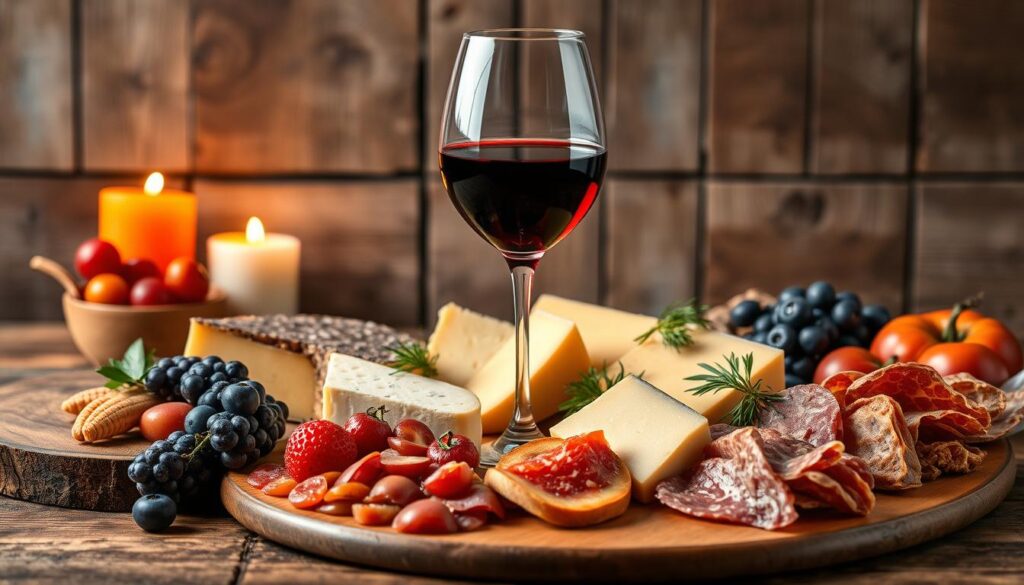
Utilize these pairing guidelines to explore various combinations. Sweet wines can enhance fruity desserts, while dry sparkling wines complement salty snacks. Remember to keep in mind regional pairings; local cuisines often harmonize best with local wines. For your next meal, consider these pairing principles to identify the best wines for an unforgettable culinary experience.
| Dish | Recommended Wine | Pairing Type |
|---|---|---|
| Scallops with grapefruit | Sauvignon Blanc | Contrasting |
| Steak | California Cabernet | Cohesive |
| Fried calamari | Brut Champagne | Contrasting |
| Lamb chops | Syrah | Cohesive |
| Fruity dessert | Moscato d’Asti | Cohesive |
Discovering Premium Wine Choices
Exploring the realm of premium wines opens a world of exquisite flavors and craftsmanship. You will find that award-winning wineries and sought-after brands stand out for their commitment to quality and innovation. Each bottle represents a labor of love, reflecting the unique terroirs and winemaking techniques that distinguish the best wines.
Highlighting Award-Winning Wineries
Many wineries have received accolades for their exceptional vintages, establishing themselves as leaders in the industry. Featured below are some prestigious producers that consistently create wines celebrated worldwide:
| Winery | Location | Notable Wine | Rating | Price |
|---|---|---|---|---|
| Duckhorn Vineyards | Napa Valley, California | 2019 Napa Valley Cabernet | 96 points | $105 |
| Giacomo Bologna | Piedmont, Italy | 2019 Barolo Serradenari | 95 points | $75 |
| Schnaitmann | Germany | 2019 Lämmler GG Dry Riesling | 94 points | $40 |
| Louis M Martini | Napa Valley, California | Lot No. 1 2019 | 93 points | $50 |
Sought-After Wine Brands to Try
As you look to expand your collection, consider including wines from some of the most sought-after brands. Each one offers distinctive characteristics that appeal to diverse palates. Here is a brief overview of popular varietals tied to these renowned labels:
- Cabernet Sauvignon: Famous for its bold flavors, this varietal shines in brands like Duckhorn and Louis M Martini.
- Pinot Noir: Delve into the elegant profiles from wineries in Burgundy and Oregon’s Willamette Valley.
- Riesling: Explore the exquisite sweet notes from Germany’s Mosel and Alsace regions in France.
- Malbec: Highlighting Argentina’s Mendoza, this varietal presents rich, fruit-forward wines ideal for everyday enjoyment.
- Rosé: The rising trend of rosé wine includes popular selections made from Grenache and Sangiovese.
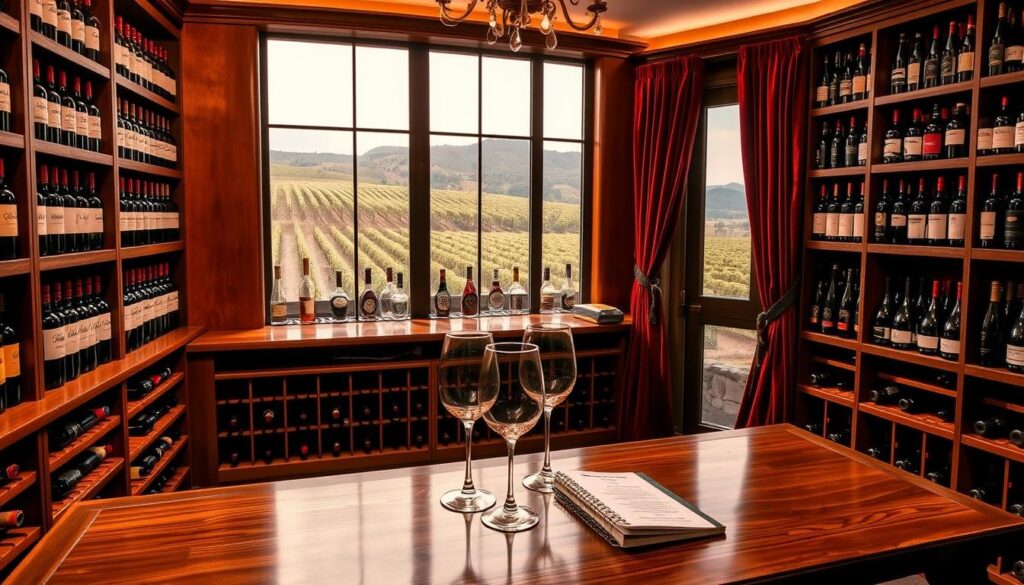
Wine Storage Essentials
Understanding the essentials of wine storage is crucial to preserving the quality of the best wines. Proper storage conditions, such as temperature, humidity, and light exposure, can make a significant difference in the taste and longevity of your collection. Familiarizing yourself with common mistakes will further enhance your wine preservation skills.
Ideal Conditions for Storing Wine
To keep your wine in optimal condition, consider the following factors:
- Temperature: The optimal storage temperature for wine is around 55°F. This applies to all wine types, including reds, whites, sparkling, and fortified wines.
- Humidity: Maintain humidity levels between 50-80%. This helps keep corks moist, preventing oxidation and spoilage.
- Light Exposure: Minimize light exposure. Ultraviolet (U.V.) rays can create unpleasant changes in flavor and structure.
- Storage Position: Store wine bottles on their side. This keeps the cork hydrated, reducing the risk of oxygen entering the bottle.
- Odor-Free Environment: Ensure your storage area is odor-free. Off odors can adversely affect the wine’s aromas and flavors.
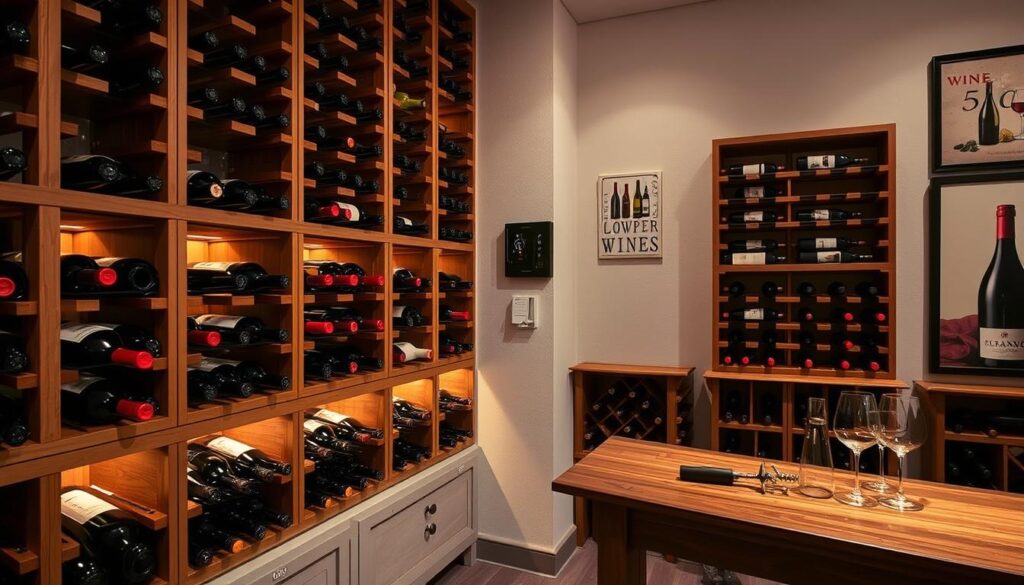
Common Mistakes to Avoid
To ensure your wine remains in top condition, avoid these common mistakes:
- Ignoring Temperature Fluctuations: Store your wine in places where the temperature remains stable, avoiding areas with heat sources.
- Improper Storage for Opened Bottles: After opening, recork the bottle immediately or use a vacuum pump to minimize exposure to oxygen.
- Storing Wine in Standard Refrigerators: Consider using wine refrigerators. They better control temperature, humidity, vibrations, and odors.
- Piling Bottles: Invest in wine racks that offer a practical and attractive solution for long-term storage.
- Short-Term Storage Neglect: For short-term needs, keep wine in a cool, dark space away from heat and sunlight, like a pantry or closet.
By following these guidelines on wine storage while avoiding common mistakes, you will protect your investment in the best wines, ensuring they remain flavorful and enjoyable for years to come.
Conclusion
As you have explored the intricacies of the wine world, it becomes clear that making informed choices is essential in your quest for the best wines. Whether you are selecting a bottle for immediate enjoyment or curating a long-term collection, understanding the nuances of wine can significantly enhance your experience. This wine selection guide provides you with the necessary tools to appreciate various vintages, regions, and whether a wine meets your taste preferences.
Incorporating knowledge about acclaimed wineries, like those from Bordeaux, enables you to navigate through their impressive offerings confidently. For instance, the Bordeaux 2019 vintage—celebrated as one of the most attractive in the last 15 years—has shown remarkable discounts and high scores, making it a prime choice for collectors and casual drinkers alike. By focusing on quality and value, you can discover wines that not only meet your palate but also offer enduring satisfaction.
Remember, your journey into the world of wine is not solely about the bottle you choose, but also the stories, experiences, and moments each wine creates. Whether dining, celebrating, or simply unwinding after a long day, the right wine can elevate the occasion. As you delve into this captivating landscape, trust in your palate and the advice gathered from this guide to lead you to the best wines that resonate with your personal taste.
